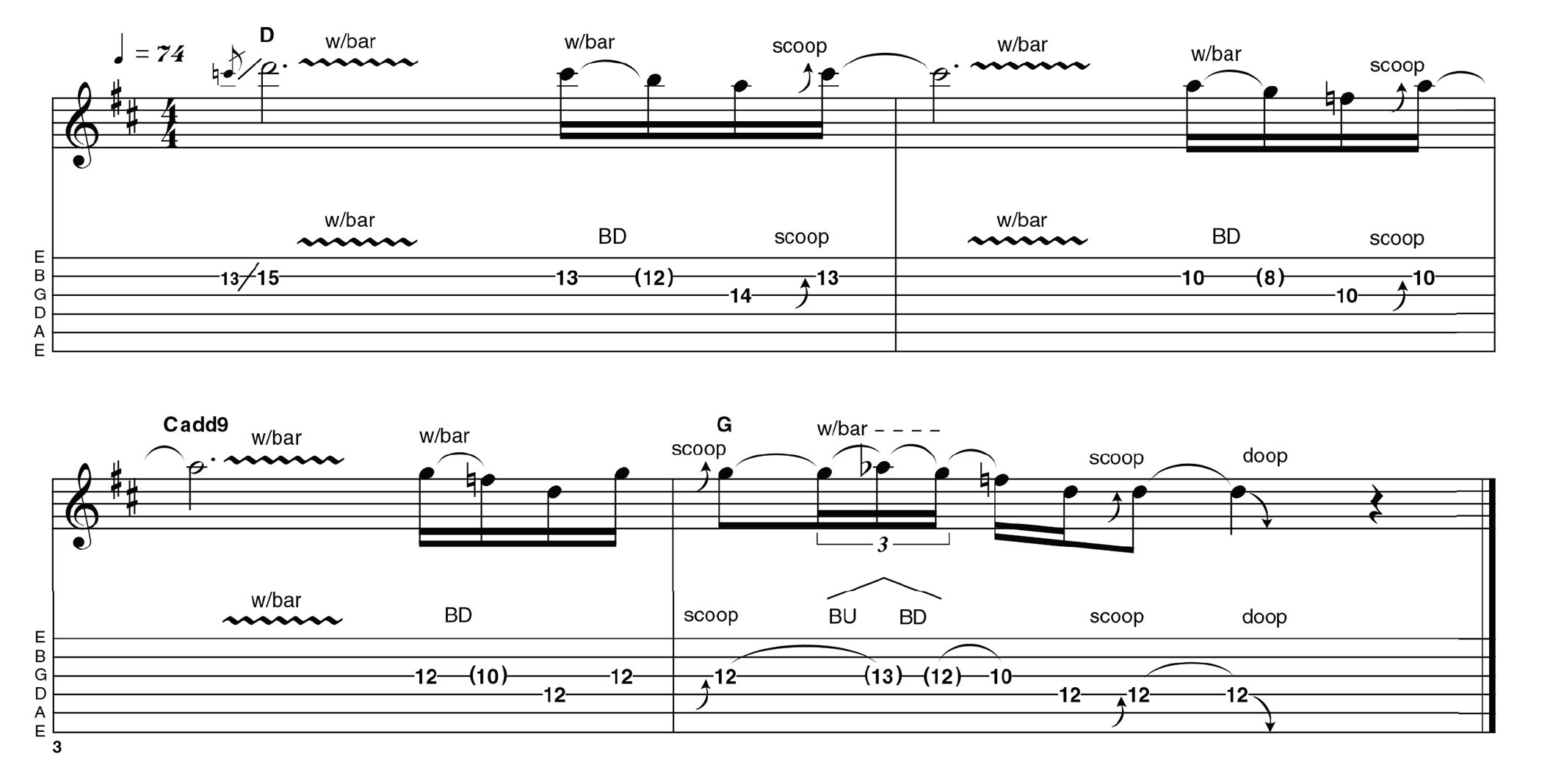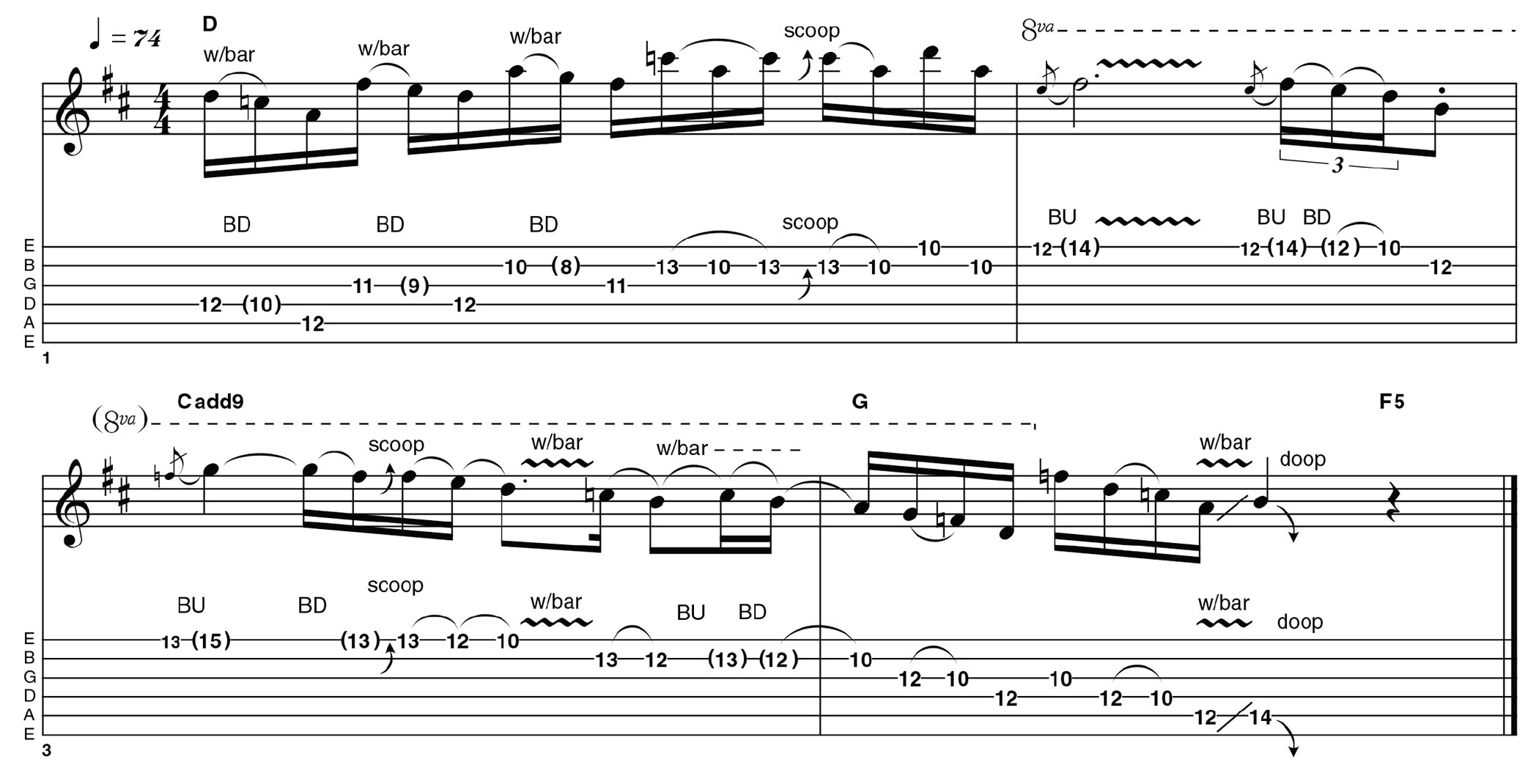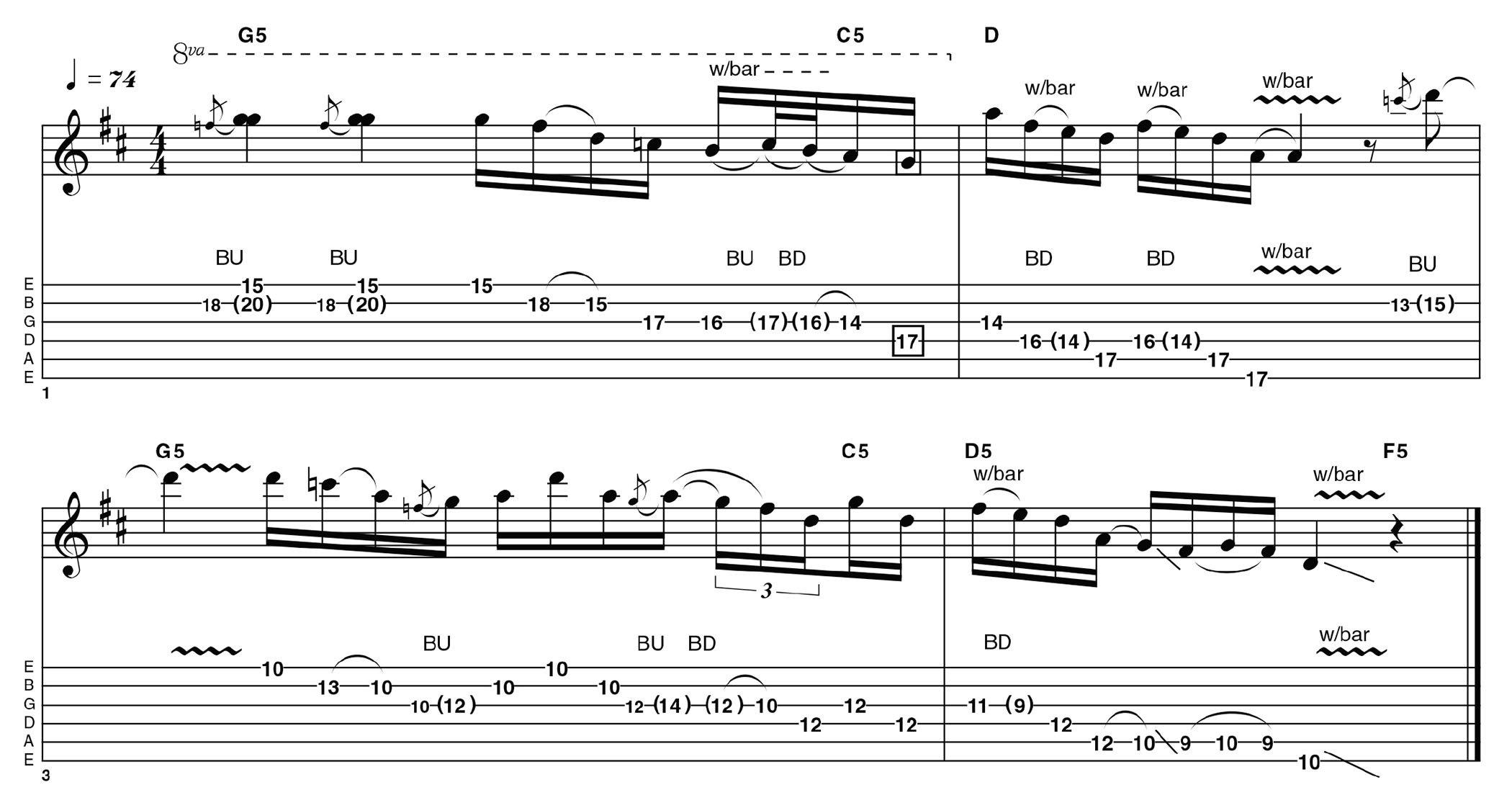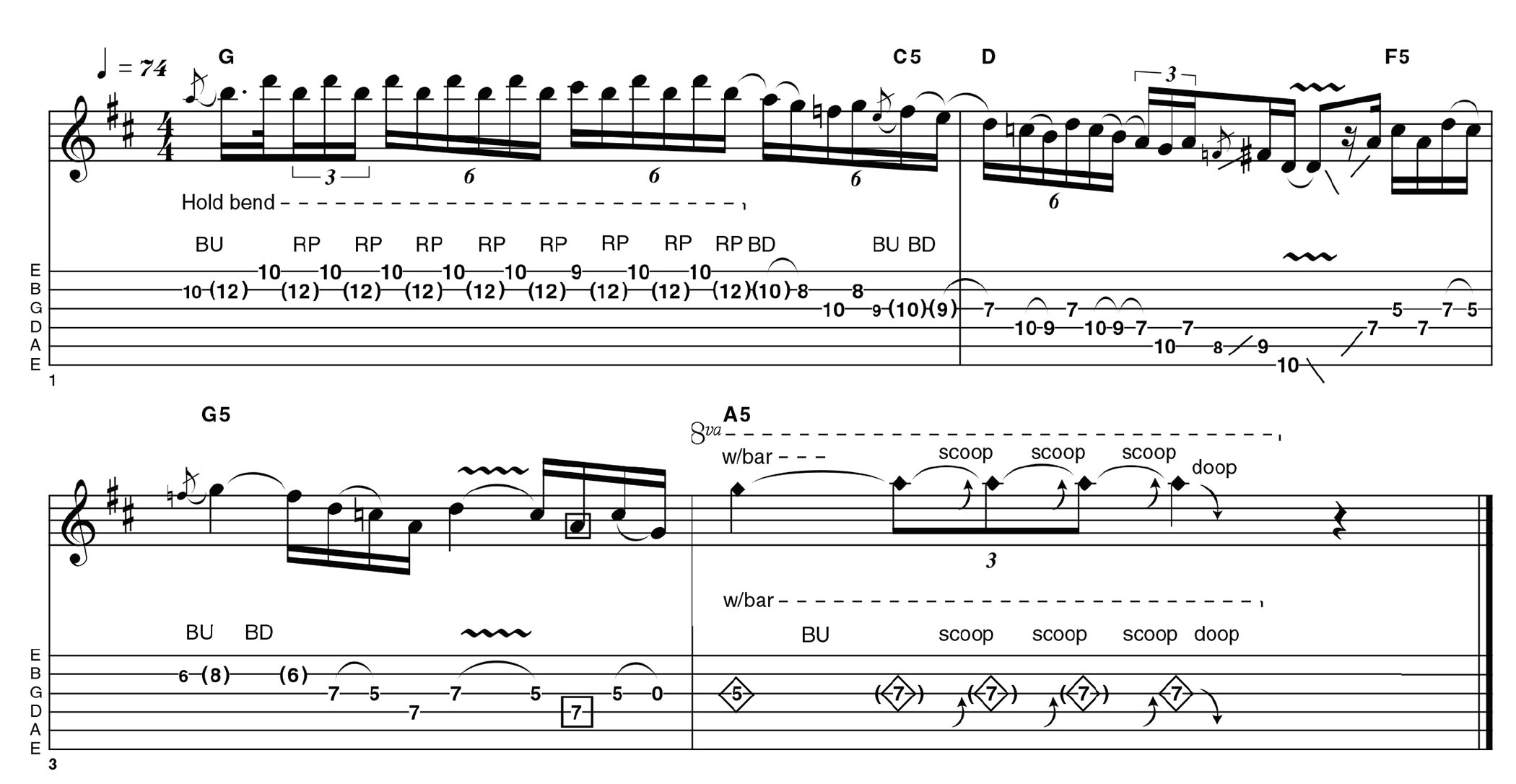“Jeff was extremely adept with a bottleneck, but he could also manipulate the whammy to get a slide effect when the mood took him”: How Jeff Beck made his whammy bar sound like a slide – his soloing secrets revealed
Nobody could bend notes like Beck – he took a glissando approach to blues-rock guitar, using the whammy bar when others might have used a slide

The original concept for this lesson was going to be ‘Some Useful Vocabulary For Slide Using Standard Tuning’ – or words to that effect.
Then I happened to have a play over the backing track using the whammy bar, instead of a slide, and realised I was channelling (or trying to channel) something like Jeff Beck’s solo in Jon Bon Jovi’s Blaze of Glory. Jeff was extremely adept with a bottleneck, but he could also manipulate the whammy to get a slide effect when the mood took him.
The four examples shown here were played separately but with the intention of forming a complete solo when listened to together. There are a few fundamentals to take care of before you dive into these examples, so take note.
I’m taking for granted that your vibrato bridge, whatever style it is, is set up floating (as opposed to flat against the body), with at least a semitone rise in pitch on the second string when you pull up on the bar.
You’ll also want a newish, properly stretched set of strings and a well-cut, lubricated nut, otherwise the constant retuning will hinder any progress. Unless you’re using a locking vibrato, you’ll probably find you need to keep retuning anyway!

A fairly well-driven tone with plenty of mids and not too much bass is also essential. Using a classic overdrive pedal (such as a Tube Screamer or Boss SD-1, or a Klon, if you’re feeling flush) really helps with the sustain you need while using the bar.
I also dialled back the tone on the bridge pickup a little for a mellower attack on the first two examples. Using the picking-hand thumb and fingers helps control noise from the other strings and makes it easier to adjust the guitar’s controls as you play – something Jeff did frequently. Hope you enjoy and see you next time!
Example 1

This first example repeats the same rhythm and a similar technique with the bar for the first three phrases. After the initial sustained note, the first two notes of each group of semiquavers are generated by pressing the bar down until the note drops a tone.
Be as accurate as you can, but remember that perfection might not have any character. The scoops into notes also help give the slide effect. In the final bar, things change up a bit with the brief semitone pull-up on the bar, followed by a nice easy divebomb.
Example 2

The first phrase here features selected notes from a D major chord/arpeggio being dropped down a tone, with the bar in this case, but it’s something you’ll often hear done with a slide.
We continue to bar 2 with some slightly more conventional playing. A scoop, another quick semitone pull-up and a short pentatonic flurry lead us to a divebomb at the end, simulating how many slide players end a phrase – but not before a wobble with the bar. You’ll notice the note is also slid down with the fretting hand to maximise the effect.
Example 3

The dynamic picks up here and this is reflected by the shrill unison bends that start the phrase.
This is followed by a flirt with G Mixolydian (noting the hammer-on at the end of bar 1) and a D major arpeggio, with another semitone pull-up on the bar, then a couple of whole-tone dips at the bottom of the D major arpeggio that leads into bar 2.
A more conventional (but hopefully still useful) pentatonic lick takes us through bar 3 before returning to a lower D major arpeggio embellished with a tone dip on the bar and a quick sus4 reference at the end.
Example 4

Holding a doublestop bend with a floating bridge can be tricky, but it isn’t impossible if you compensate by pushing the whole thing slightly sharp with your fretting hand. The idea behind this is to simulate the rapid-fire licks available to slide players using open tuning but then changing to a more country style for bar 2.
Bar 3 is basically the setup for the harmonic in bar 4, but there is some aggressive vibrato and a hammer-on from nowhere to spice things up. The final G harmonic is pulled up to A via the bar, before the final dive. String noise here is encouraged!
Hear it here
Jeff Beck – Live At Ronnie Scott's
Of all the available formats, our recommendation is to lean towards the DVD/video. The classic Where Were You is, of course, a benchmark for whammy bar technique, but check out Jeff combining bar and bottleneck flair on Angel (Footsteps) and Nadia, plus what can justifiably be described as a mindblowing cover of The Beatles’ A Day In The Life.
Guest appearances from Imogen Heap, Joss Stone and Eric Clapton enhance an already attractive package.
Jeff Beck – Guitar Shop
Released in 1989 after a four-year hiatus, this was the first album on which Jeff dispensed almost entirely with the pick and showcased his extreme dexterity with the whammy bar.
Behind The Veil, Where Were You and Two Rivers are all great examples of this. They also demonstrate how he would interpret an often simple-sounding but deceptively tricky melody in his own style – not necessarily ‘flash’ (pun intended) but undeniably slick and unique.
Jeff Beck – There & Back
Jeff was always ahead of the curve, as this album from 1980 shows. Many guitarists were unsure about where to go at this point, with many forsaking their hard-won skills to try to assimilate themselves into this new era.
However, Jeff came into the '80s with a collection of contemporary sounding tunes and an approach that the ensuing decades have shown to be ahead of its time. Check out Star Cycle, The Pump and The Final Peace to hear what we mean.
Get The Pick Newsletter
All the latest guitar news, interviews, lessons, reviews, deals and more, direct to your inbox!
As well as a longtime contributor to Guitarist and Guitar Techniques, Richard is Tony Hadley’s longstanding guitarist, and has worked with everyone from Roger Daltrey to Ronan Keating.
“There are so many sounds to be discovered when you get away from using a pick”: Jared James Nichols shows you how to add “snap, crackle and pop” to your playing with banjo rolls and string snaps
How to find new approaches to blues soloing – using fingerstyle improv ideas and Roy Buchanan-inspired licks













![Joe Bonamassa [left] wears a deep blue suit and polka-dotted shirt and plays his green refin Strat; the late Irish blues legend Rory Gallagher [right] screams and inflicts some punishment on his heavily worn number one Stratocaster.](https://cdn.mos.cms.futurecdn.net/cw28h7UBcTVfTLs7p7eiLe.jpg)
